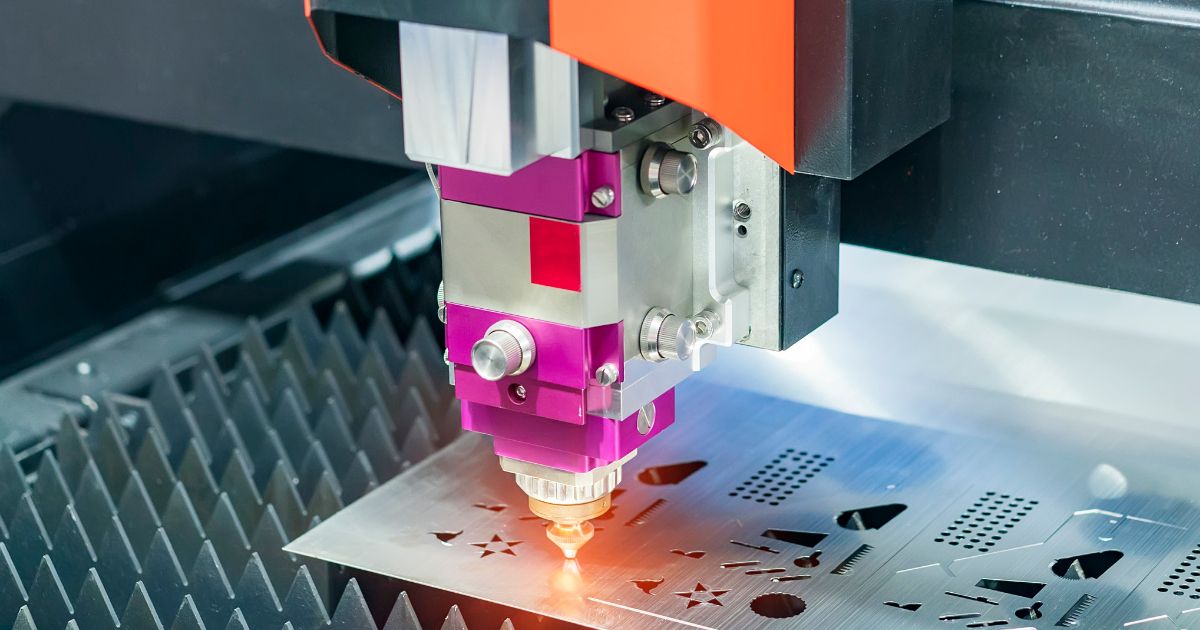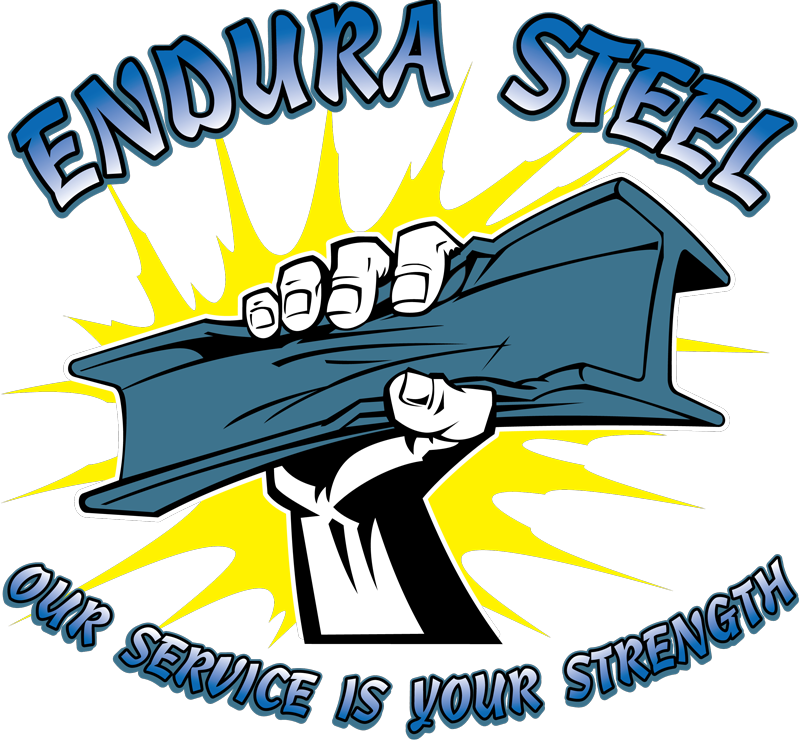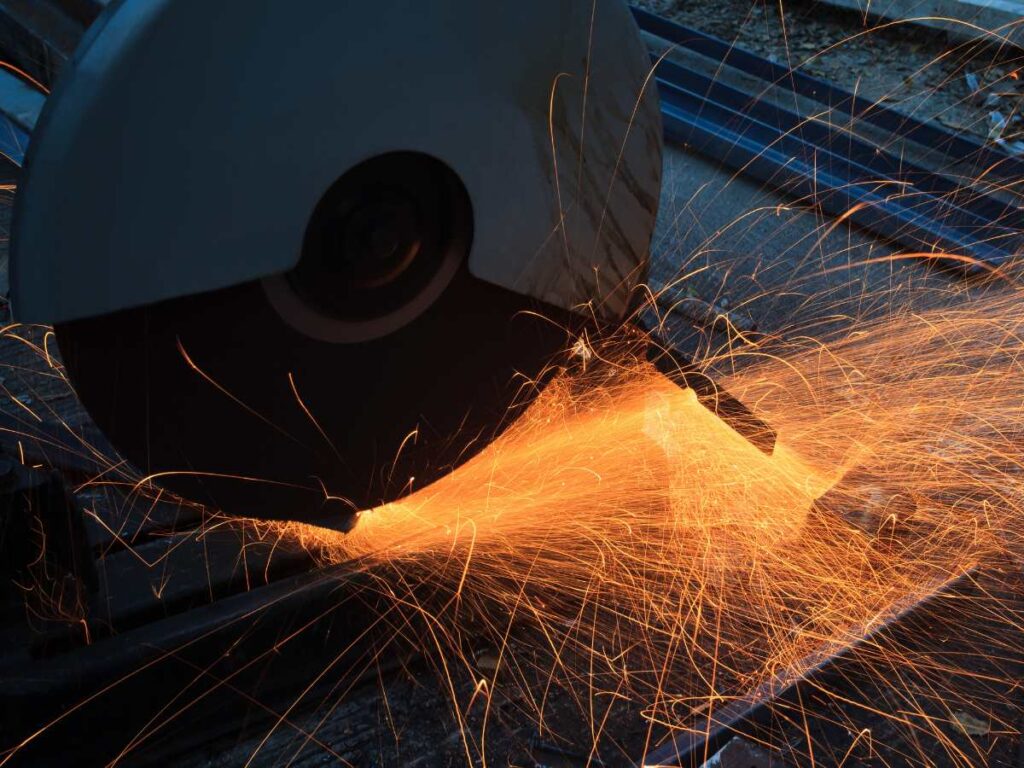Metal cutting, a foundational process in manufacturing, transforms raw metal into specific shapes and sizes, catering to diverse industries. This operation employs many techniques, each tailored for particular materials and desired outcomes. Traditional methods utilize sharp-edged tools to shear away metal layers.
Meanwhile, advanced processes like laser cutting, waterjet cutting, and electrical discharge machining (EDM) harness the power of concentrated energy beams, high-velocity water, or electrical sparks, respectively, to achieve precision cuts. The method depends on factors. As technology evolves, these methods continually adapt, promising increased efficiency and precision in metalworking.

Sawing/Saw Cutting
Sawing, often termed saw cutting, involves using a saw blade with sharp metallic teeth to segment material into desired shapes or more manageable pieces. Manufacturers predominantly use two types: circular saw cutting and band saw cutting. In circular saw cutting, a rotating disc blade slices through the material, whereas band saw cutting employs a long, straight blade for continuous and even cutting.
Benefits of Saw Cutting
Saw cutting stands out from various other metal cutting techniques due to a plethora of advantages it brings to the table. One of its most notable perks is its capability for close-tolerance cutting. This precision minimizes the waste produced, leading to a more sustainable operation and cost savings in material use. Furthermore, saw cutting marries speed with quality; it achieves rapid cutting rates without compromising the cut’s finish. This dual advantage means that, often, there’s no necessity for subsequent finishing processes, leading to a quicker project completion time. Consequently, saw-cutting can significantly reduce overall expenses for certain applications, making it a preferred choice for many manufacturers.
Materials Suitable for Saw Cutting
Saw cutting is versatile, catering to a broad spectrum of metals. This includes common ones like aluminum, brass, bronze, and copper, as well as more specialized types such as high-temperature alloys, nickel alloys, stainless steel, and titanium. These metals can be efficiently processed using saw-cutting techniques in bars, plates, pipes, or tubes. Nevertheless, the method showcases its prowess, especially when dealing with thicker materials or irregular cross-sections. This is because sawing equipment can sometimes struggle to maintain stability with thin, flat materials during cutting, making it more adept at handling robust and varied profiles.
Saw Cutting Across Various Industries
Saw cutting is a fundamental technique that spans numerous sectors, each with unique requirements and applications. The aerospace industry, for instance, leans on it for crafting precision parts that ensure aircraft reliability. Architectural firms employ saw cutting to sculpt metals for structural and design elements, bringing visions to life. In biotechnology, the method is pivotal in creating equipment and apparatuses.
The chemical sector requires it for fabricating containers and machinery, while food processing utilizes saw-cutting for machinery and conveyance systems. Marine industries tap into its potential for shipbuilding and marine equipment. For packaging, the precision and efficiency of saw cutting help in designing tailored solutions. Meanwhile, the pharmaceutical industry relies on it to create apparatus and infrastructure for drug production and research. This wide industry embrace underlines cutting’s versatility and indispensability.

Laser Cutting
Laser cutting is a marvel of modern technology, harnessing the intense energy of high-powered light beams to intricately slice through materials. Unlike traditional methods, it doesn’t rely on direct contact; it heats and melts the target, resulting in ultra-precise cuts. The versatility of laser cutting doesn’t end there. Depending on the material in question and the specific requirements of a project, it can adjust and employ a range of cutting and extraction techniques. Beyond just dissecting larger materials into refined pieces, laser technology offers the added capability of etching or engraving. This functionality paves the way for both practical applications—like marking components for identification—and artistic endeavors, giving materials a touch of aesthetic brilliance.
The Superiority of Laser Cutting
The integration of computerized controls with modern laser-cutting technologies is a game-changer. This synergy ensures that lasers glide over materials impeccably, guaranteeing that each cut matches the desired dimensions and contours to the tee. But the merits of laser cutting don’t stop at just precision and accuracy.
Compared to some traditional metal cutting techniques, laser cutting boasts a distinct set of advantages:
Cost-Efficiency: The wear and tear on laser cutting equipment are less pronounced, translating to reduced maintenance and replacement expenses over time.
Material Integrity: The no-contact nature of laser cutting significantly diminishes the potential for material contamination, ensuring that the end product retains its purity and quality.
Safety First: With automated controls and the absence of direct physical interaction between the operator and the cutting tool, workplace accidents are substantially minimized.
Laser Cutting: Material Compatibility
Laser cutting stands out for its adaptability to various materials, especially when dealing with metals. Commonly, industries turn to this technique for processing plates and sheets made of metals like aluminum, brass, copper, nickel, stainless steel, and titanium. With their distinct properties, these metals lend themselves well to the precise and efficient nature of laser cutting.
However, some materials pose challenges to this method. Heat-sensitive materials, for instance, are risky candidates, as they can warp or deform under the laser’s intense heat. Reflective materials, on the other hand, can redirect the laser beam, posing a risk of uneven or failed cutting and a potential hazard that might damage the cutting equipment itself. As a result, when selecting materials for laser cutting, it’s imperative to understand these nuances to ensure the cut’s quality and the operation’s safety.
Laser Cutting’s Industry Reach
Laser cutting extends beyond a singular application, making its mark in many industries. Here’s a deeper look at its pervasive influence:
Aerospace: Laser cutting ensures the precision required in crafting aircraft components, where even a small deviation can have substantial consequences.
Architectural: Modern designs and intricate patterns, especially in metallic facades or structural elements, owe their existence to the precision of laser cutting.
Biotechnology: In an industry where equipment and tools often demand surgical precision, laser cutting emerges as a reliable technique for crafting and customization.
Chemical: Laser cutting provides both durability and precision for creating parts of machinery or containers that need to withstand aggressive chemicals.
Food Processing: Laser cutting aids in designing and developing machinery components that meet the industry’s hygiene and efficiency standards.
Marine: From parts for ships to underwater equipment, laser cutting ensures resilience against the harsh marine environment.
Packaging: Laser cutting is crucial in creating packaging machinery or tools that demand exact dimensions to ensure products are packed efficiently and safely.
Pharmaceutical: In an industry defined by precision and hygiene, laser cutting crafts apparatus vital for research, drug production, and packaging.

Water Cutting
Waterjet cutting stands out as a unique metal-cutting technique that capitalizes on the force of water. Water is pressurized to extreme levels and channeled into fine streams or waterjets that act as cutting blades. When directed onto a material, these streams can slice through it, molding it into the intended shape and dimensions.
Abrasives can be introduced into the waterjets to bolster their cutting capabilities, especially when working with tougher or thicker materials. Common abrasives, like aluminum oxide or garnet, enhance the cutting power of the jets. With these abrasives, the waterjets can tackle even the most challenging materials, ensuring clean, precise cuts regardless of the material’s density or hardness. Waterjet cutting offers power and precision, making it an invaluable tool in various industries.
The Strengths of Waterjet Cutting
Waterjet cutting brings several distinct advantages to the table, especially when compared to other cutting methods:
Cold Cutting Nature: Unlike many cutting techniques that rely on heat, waterjet cutting is fundamentally a cold-cutting process. This means the material isn’t subjected to high temperatures, which is crucial for metals that might otherwise warp or lose their properties when heated.
Minimal Heat-Affected Zone (HAZ): Due to its cold-cutting character, the process significantly reduces HAZ. A smaller HAZ means there’s less chance of the material experiencing thermal distortion or changes in its microstructure, ensuring the integrity of the cut piece.
Superior Precision for Thick Materials: Waterjet cutting demonstrates a unique prowess when handling denser materials compared to methods like laser cutting. It can carve through thicker sections while maintaining tight tolerances, ensuring depth and accuracy.
Cleaner Outputs: With waterjet cutting, the byproducts of the process, like slag or dross, are minimized. This leads to cleaner cuts, reducing the need for post-processing and ensuring a more polished final product.
Waterjet Cutting’s Industrial Applications
The utility of waterjet cutting isn’t confined to a narrow range; its adaptability allows it to cater to an assortment of industrial needs, facilitated by its capability to make both 2D and 3D cuts. Such dimensional versatility equips manufacturers with the tools to create both straightforward and intricate components, thereby serving a broad set of industries:
Aerospace: The high-precision demands of aerospace components like engines, turbine blades, and control panels are expertly met with waterjet cutting, which delivers exact cuts without thermal degradation.
Marine: In an industry where materials must withstand saline environments and high pressures, waterjet-cut pipes and pumps stand out for their precise dimensions and structural integrity.

Shearing
Shearing offers a unique approach to metal cutting, employing a two-blade system consisting of a moving upper blade and a stationary lower blade. These blades are slightly offset from each other to facilitate the cutting process. When the upper blade descends, it applies pressure on the material, pressing it against the stationary lower blade. The combined force deforms the material to a point where it can no longer maintain its structure, causing it to strain and eventually yield. This action results in a clean cut, with the technique being particularly effective for straight-line cuts in sheet and plate metals. The simplicity yet effectiveness of shearing makes it a widely used method in various metalworking applications.
The Multifaceted Benefits of Shearing
Shearing presents an array of advantages that extend beyond mere cutting, making it a notably versatile option compared to other metal cutting techniques:
Versatility in Operations: One of the most significant benefits is that shearing machines are multi-functional. They are not limited to cutting; they can also execute bending, punching, and pressing operations on metal materials. This multi-purpose capability can be a boon for manufacturers looking for a one-stop solution for multiple metalworking tasks.
Waste Minimization: Shearing is remarkably efficient when it comes to waste management. Shearing generates virtually no waste, unlike other cutting methods that produce chips or slag. This enhances the overall efficiency and contributes to cost savings, as there is minimal material loss during the operation.
Material Cost Efficiency: The process is almost waste-free, so the material utilization rate is very high. This helps reduce the overall material costs, making shearing an economically attractive option for various applications.
Material Suitability in Shearing
Shearing is most effective when applied to plate and sheet materials, as its mechanics are tailored for these configurations. However, it has its limitations:
Optimal for Mid-Range Thickness: While it excels with sheet and plate materials, shearing may struggle with excessively thick substances. Such materials often require immense force, making them less suitable for this method.
Not Ideal for Hollow Structures: Hollow materials pose another challenge as they may deform under the pressure exerted by the shearing blades, leading to inconsistent or poor-quality cuts.
Material Compatibility: When it comes to metal types, shearing is fairly versatile. It can efficiently cut a range of metals. These materials respond well to shearing, offering clean cuts without significant material waste.
Industrial Applications of Shearing
The utility of shearing extends across many sectors, underlining its adaptability and functional versatility. The process serves to create a variety of components crucial to different industries:
Aerospace: In a sector where precision is paramount, sheared components like aircraft engines benefit from the process’s high accuracy.
Automotive: Sheared metal parts like discs are often integral in braking systems, showcasing the method’s relevance in the automotive industry.
Oil & Gas: Pipes and pumps, essential for fluid transportation and control, are other instances where shearing provides accurate and reliable results.
Manufacturing: Generally, shearing creates components like rings and tubing, which are essential in various machinery and structural applications.
Electrical and Electronics: Sheared parts can also be found in electrical casings and electronic components, where clean, straight cuts are highly valued.

